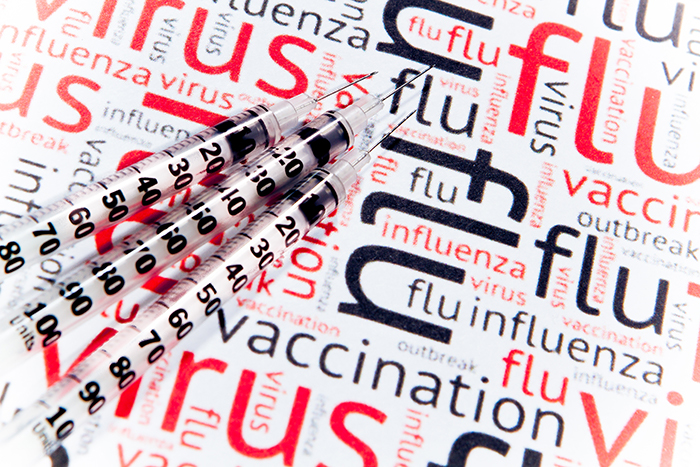Clinical

Clinical briefing: Pharmacy flu jabs save NHS millions
In Clinical
Let’s get clinical. Follow the links below to find out more about the latest clinical insight in community pharmacy.Bookmark
Record learning outcomes
Delivering flu vaccines through pharmacy is cheaper than from GPs and saves the NHS millions of pounds, our clinical editor writes

Spanish influenza swept the world in 1918 and may have infected up to half the world’s population.1 Of those infected, one in 20 died and, while it is difficult to be accurate, the pandemic is thought to have killed between 50-100 million people.1,2 A century later, community pharmacies are firmly on the frontline in the fight against flu.
During the 2017/18 flu season, for example, community pharmacists administered around 1.3m flu vaccinations (an increase of 393,304 on 2016/17). In England, 71.1 per cent of community pharmacies took part in the 2017/18 programme. Each pharmacist administered, on average, 150 vaccinations.3
Delivering flu vaccines in pharmacies saves the NHS millions of pounds. For instance, a pilot scheme in London suggested that, on average, flu vaccination administered in a pharmacy costs the NHS up to £2.35 less than a dose administered at a GP practice.4 Pharmacists are estimated to have saved the NHS around £3m in 2017/18.
Economical?
In July, the think-tank the International Longevity Centre (ILC) published a report, supported by Seqirus, examining the economics of flu vaccination in England.
Depending on the assumptions made about coverage, cost and vaccine efficacy, the ILC estimated that vaccination avoids between 182,732 and 626,810 cases of flu, and between 277 and 9,872 deaths a year.5
The ILC estimates that, in England, flu vaccination costs £203.5m a year at the current rates of coverage. Costs would rise to £258.2m a year if coverage reached 75 per cent, but vaccination saves £0.8m-£2.7m in GP costs, £1.9m-£44.4m in hospital costs and £12.2m-£28.9m in sick leave. The savings associated with avoiding premature death range from £89.2m-£269.7m; the cost per death averted is £50,610.
The ILC report says the model it used is “conservative” and may underestimate the number of cases avoided and “the overall cost savings”. The analysis is also “highly sensitive to vaccine administration costs”. Using economies of scale to reduce unit costs would improve the potential benefits compared to the costs.
The report adds that “the costs of delivering a vaccine through a pharmacy is £2 cheaper than through a GP – this suggests there may be opportunities to find further reductions in the cost of delivery”.5
NHS England recommends that for the coming 2018/19 flu season:
- Adults aged 18-65 years in at-risk groups should receive the quadrivalent influenza vaccine
- The children’s programme uses a quadrivalent live attenuated vaccine
- People aged 65 years and older should receive the adjuvanted trivalent influenza vaccine, which “is the most effective vaccine currently available for this group”.
Ideally, pharmacists and other providers should complete vaccination by the end of November 2018 but people can receive the vaccine until the end of the influenza season in March 2019.6
Ambitious
NHS England and the Government want to ensure that at least 75 per cent of eligible adults receive the flu vaccine but this is some way from being achieved. The 2018/19 “uptake ambitions” are 75 per cent in those aged 65 years and older (in 2016/17, coverage was 68.8 per cent in Wales, 71.8 per cent in Northern Ireland, 72.6 per cent in England and 73.7 per cent in Scotland).7
In at-risk groups and pregnant women, the target is at least 55 per cent. Providers who achieved a higher coverage than this should maintain the higher rate.6
In 2016/17, uptake for at-risk groups ranged from 44.8 per cent in Scotland to 56.0 per cent in Northern Ireland.
Among pregnant women coverage varied from 47.2 per cent in England to 56.7 per cent in Northern Ireland.
Among healthcare workers, uptake ranged from 33.4 per cent in Northern Ireland to 68.7 per cent in England.7 It would be interesting to know how many community pharmacists received the jab and immunised their staff.
The ILC report suggests that public policy should focus on improving coverage to those under 15 years of age “where efficacy and incidence is higher”.5 The ambition is to vaccinate at least 48 per cent of pre-school children aged two and three years, but providers should aim for an average of at least 65 per cent across all years in school-aged children.6
In particular, providers should make an “increased effort” to vaccinate pre-school children, where uptake is not as high as in schools. Children younger than five years of age have the highest rate of hospital admissions for flu.6
As well as protecting children, increasing vaccination rates helps protect the community. The ILC model does not include ‘herd immunity’5 but the vaccine’s efficacy in non-vaccinated contacts of vaccinated children and adolescents ranges from 24-61 per cent depending on the study design.8
Over the last century, we’ve faced several pandemics but thankfully none has been as devastating as the 1918 outbreak. However, the next pandemic influenza virus may already be lurking in a duck, chicken or pig somewhere in the world...
